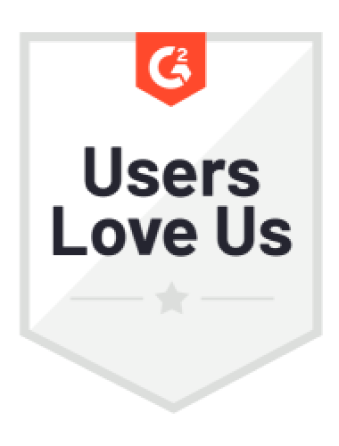Business Intelligence Tool Comparison: Looker vs. Sisense
In today's data-driven business landscape, companies rely heavily on business intelligence tools to extract valuable insights from their vast data repositories. Two prominent players in this field are Looker and Sisense, both offering comprehensive solutions to the ever-growing demands of businesses. This article aims to compare these two popular business intelligence tools and help you make an informed decision about which one is the right fit for your organization.
Understanding Business Intelligence Tools
Before diving into the specifics of Looker and Sisense, let's first establish a clear understanding of what business intelligence tools entail. In a nutshell, business intelligence refers to the technologies, applications, and practices that facilitate the collection, integration, analysis, and visualization of business data to support effective decision-making.
Defining Business Intelligence
Business intelligence encompasses a wide range of activities aimed at transforming raw data into actionable insights. By leveraging business intelligence tools, organizations can uncover patterns, trends, and correlations within their data, enabling them to make informed decisions, identify market opportunities, and mitigate risks.
The Role of Business Intelligence Tools in Modern Business
The rapid evolution of technology and the exponential growth of data have made business intelligence tools indispensable in modern business operations. These tools empower organizations to extract valuable insights from their data, improve operational efficiency, enhance customer experiences, and gain a competitive edge.
An Introduction to Looker
Looker is a robust business intelligence tool that stands out for its user-friendly interface, powerful analytics capabilities, and collaborative features. Designed to enable both technical and non-technical users to access and analyze data, Looker offers a seamless experience for data exploration and visualization.
Key Features of Looker
Looker provides a wide range of features that cater to the diverse needs of businesses. Some noteworthy features include:
- Intuitive Data Exploration: Looker allows users to effortlessly navigate through complex datasets, enabling them to explore data from various dimensions and angles.
- Interactive Dashboards: Looker facilitates the creation of interactive and customizable dashboards, empowering users to monitor key metrics and visualize data in real-time.
- Advanced Analytics: Looker offers advanced analytical capabilities, such as drill-through analysis, cohort analysis, and predictive modeling, allowing businesses to unearth insights that drive strategic decision-making.
- Collaborative Environment: Looker fosters collaboration by providing a shared platform where users can discuss, annotate, and share insights, promoting knowledge sharing and data-driven decision-making.
Pros and Cons of Using Looker
While Looker offers numerous benefits, it's essential to consider both its advantages and limitations before adopting it for your business. Some key pros and cons include:
- Pros:
- User-Friendly Interface: Looker's intuitive interface makes it easy for users of all skill levels to access and analyze data without extensive technical knowledge.
- Scalability: Looker can handle large datasets and accommodate the needs of growing businesses, ensuring that your analytical capabilities keep pace with your expanding data volumes.
- Flexible Deployment Options: Looker can be deployed on-premises or in the cloud, catering to the unique preferences and requirements of your organization.
- Cons:
- Learning Curve: Despite its user-friendly features, Looker might require a learning curve for users who have limited experience with business intelligence tools.
- Cost: Looker's licensing costs might be prohibitive for small businesses with tight budgets, especially considering the additional expenses associated with data storage and maintenance.
- Data Security: While Looker has robust security measures in place, some businesses may have stringent security requirements that necessitate additional layers of protection.
An Introduction to Sisense
Sisense is another prominent player in the business intelligence field, renowned for its powerful data integration capabilities and comprehensive analytics solutions. With its ability to handle large-scale datasets and deliver fast query response times, Sisense has gained popularity among businesses of all sizes.
Key Features of Sisense
Sisense packs an array of features that enable organizations to harness the full potential of their data. Some notable features include:
- Data Integration: Sisense offers seamless integration with various data sources, including databases, cloud storage, and business applications, simplifying the data collection and consolidation process.
- In-Chip Technology: Sisense's unique in-chip technology accelerates the data processing and query response times, allowing users to analyze large datasets swiftly.
- Embedded Analytics: Sisense enables businesses to embed analytics capabilities within their own applications, empowering end-users to access and explore data without switching between multiple tools.
- Ad Hoc Analysis: Sisense empowers users to perform ad hoc analysis on the fly, enabling them to generate insights and answer specific business questions in real-time.
Pros and Cons of Using Sisense
Before committing to Sisense, it's crucial to evaluate its strengths and weaknesses. Here are some pros and cons to consider:
- Pros:
- Data Integration: Sisense excels in its ability to integrate data from numerous sources, providing organizations with a unified view of their data.
- Fast Query Response Times: Sisense's in-chip technology allows for speedy data processing and query execution, ensuring that businesses can access insights in near real-time.
- Embedded Analytics: Sisense's embedded analytics capabilities enable businesses to drive data-driven decision-making by democratizing access to critical insights.
- Cons:
- Complex Implementation: Setting up Sisense might require expert assistance, particularly if your data infrastructure is complex or if you require advanced customization.
- Price: Sisense's comprehensive features come at a cost, which may be a barrier for smaller businesses with limited budgets.
- User Interface: While Sisense offers powerful data analytics capabilities, some users may find its interface less intuitive compared to other tools in the market.
Detailed Comparison Between Looker and Sisense
Now that we've explored the individual strengths of Looker and Sisense, let's delve into a detailed comparison to understand how these tools differ in various key areas.
User Interface and Ease of Use
One aspect to consider when choosing a business intelligence tool is the user interface and overall user experience. Looker boasts an intuitive interface that caters to users at all levels of technical expertise. Its drag-and-drop functionality and customizable dashboards make data exploration a breeze. On the other hand, Sisense may require some initial training due to its more extensive feature set and advanced capabilities, but it offers a highly flexible and visually appealing interface once users are familiar with the tool.
Data Integration and Management
Efficient data integration and management capabilities are crucial for achieving a unified view of your organization's data. Looker shines in this area, with its seamless integration capabilities and support for numerous data sources. Whether your data is stored in cloud platforms, on-premises databases, or third-party applications, Looker enables you to consolidate and analyze your data effortlessly. Sisense also offers strong data integration capabilities, allowing organizations to connect to a wide range of data sources. However, complex data integrations may require additional configuration and expertise.
Reporting and Visualization Capabilities
The ability to create visually appealing reports and compelling visualizations is a key differentiating factor between Looker and Sisense. Looker offers a rich set of visualization options, allowing users to create interactive charts, graphs, and dashboards. Moreover, Looker's collaborative environment fosters knowledge sharing and collaboration among teams, enhancing the reporting and visualization process. Sisense, on the other hand, boasts advanced data visualization capabilities, leveraging cutting-edge technologies to create stunning visualizations. Its embedded analytics feature ensures that insights are easily accessible to end-users within their familiar environments.
Pricing and Value for Money
When evaluating business intelligence tools, the pricing structure and value for money are critical considerations. Looker's pricing is based on a subscription model, with costs varying based on factors such as user count and feature requirements. While Looker offers scalability and flexibility, the overall cost of ownership might be higher, especially for smaller businesses. Sisense also operates on a subscription-based model, and its pricing is influenced by factors such as data volume and the number of users. It's essential to carefully assess your organization's specific needs and budgetary constraints to determine the best value for money.
Making the Right Choice: Looker or Sisense?
Choosing the right business intelligence tool for your organization involves considering multiple factors. Here are some key factors to consider:
Factors to Consider When Choosing a Business Intelligence Tool
1. Scalability: Assess whether the tool can accommodate your organization's growing data volumes and evolving analytics needs.
2. User-Friendliness: Consider the technical expertise of your users and determine which tool offers a more intuitive and user-friendly interface.
3. Integration Capabilities: Evaluate how well the tool integrates with your existing data infrastructure and whether it can connect to various data sources.
4. Advanced Analytics: Determine the level of analytics sophistication required by your organization and choose a tool that offers the necessary analytical capabilities.
5. Budgetary Constraints: Take into account the overall cost of ownership, including licensing costs, implementation expenses, and ongoing maintenance costs.
Final Verdict: Which Tool is Right for Your Business?
Ultimately, the choice between Looker and Sisense depends on your specific business requirements and preferences. Both tools have their unique advantages and limitations. Looker excels in usability, data exploration, and collaborative features, making it a suitable choice for organizations seeking an intuitive and user-friendly tool. On the other hand, Sisense's robust data integration capabilities and advanced analytics functionalities make it an ideal fit for organizations that deal with complex data sources and require in-depth analysis.
By thoroughly evaluating your organization's needs and considering the strengths and weaknesses of Looker and Sisense, you can make an informed decision that aligns with your business goals. Remember, the right business intelligence tool can empower your organization to unlock the full potential of your data and drive data-driven decision-making in today's competitive landscape.
While Looker and Sisense offer powerful solutions for business intelligence, integrating them with a sophisticated data governance platform like CastorDoc can significantly enhance their capabilities. CastorDoc's advanced governance, cataloging, and lineage features, combined with a user-friendly AI assistant, create an unparalleled tool for enabling self-service analytics. Whether you're looking to streamline data management or empower your team with accessible, AI-driven insights, CastorDoc complements your chosen BI tool to help you achieve a comprehensive data strategy. Check out more tools comparisons here and discover how CastorDoc can transform your organization's approach to data.
You might also like
Get in Touch to Learn More



“[I like] The easy to use interface and the speed of finding the relevant assets that you're looking for in your database. I also really enjoy the score given to each table, [which] lets you prioritize the results of your queries by how often certain data is used.” - Michal P., Head of Data




.png)
%202.png)

%202.png)

%202.png)
%202.png)
%202.png)

%202.png)


%202.png)

%202.png)


.png)

